« Return to all search results
Title Search Results
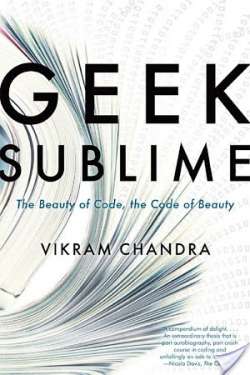
The nonfiction debut from the author of the international bestseller Sacred Games about the surprising overlap between writing and computer coding Vikram Chandra has been a computer programmer for almost as long as he has been a novelist. In this extraordinary new book, his first work of nonfiction, he searches for the connections between the worlds of art and technology. Coders are obsessed with elegance and style, just as writers are, but do the words mean the same thing to both? Can we ascribe beauty to the craft of writing code? Exploring such varied topics as logic gates and literary modernism, the machismo of tech geeks, the omnipresence of an "Indian Mafia" in Silicon Valley, and the writings of the eleventh-century Kashmiri thinker Abhinavagupta, Geek Sublime is both an idiosyncratic history of coding and a fascinating meditation on the writer's art. Part literary essay, part technology story, and part memoir, it is an engrossing, original, and heady book of sweeping ideas.

Based on Evan Wright's National Magazine Award-winning story in Rolling Stone, this is the raw, firsthand account of the 2003 Iraq invasion that inspired the HBO® original mini-series. Within hours of 9/11, America’s war on terrorism fell to those like the twenty-three Marines of the First Recon Battalion, the first generation dispatched into open-ended combat since Vietnam. They were a new pop-culture breed of American warrior unrecognizable to their forebears—soldiers raised on hip hop, video games and The Real World. Cocky, brave, headstrong, wary and mostly unprepared for the physical, emotional and moral horrors ahead, the “First Suicide Battalion” would spearhead the blitzkrieg on Iraq, and fight against the hardest resistance Saddam had to offer. Hailed as “one of the best books to come out of the Iraq war”(Financial Times), Generation Kill is the funny, frightening, and profane firsthand account of these remarkable men, of the personal toll of victory, and of the randomness, brutality and camaraderie of a new American War.
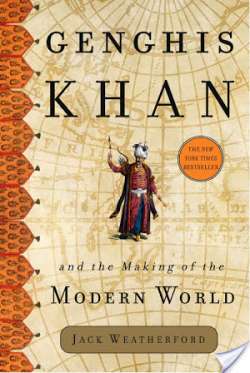
The name Genghis Khan often conjures the image of a relentless, bloodthirsty barbarian on horseback leading a ruthless band of nomadic warriors in the looting of the civilized world. But the surprising truth is that Genghis Khan was a visionary leader whose conquests joined backward Europe with the flourishing cultures of Asia to trigger a global awakening, an unprecedented explosion of technologies, trade, and ideas. In Genghis Khan and the Making of the Modern World, Jack Weatherford, the only Western scholar ever to be allowed into the Mongols’ “Great Taboo”—Genghis Khan’s homeland and forbidden burial site—tracks the astonishing story of Genghis Khan and his descendants, and their conquest and transformation of the world. Fighting his way to power on the remote steppes of Mongolia, Genghis Khan developed revolutionary military strategies and weaponry that emphasized rapid attack and siege warfare, which he then brilliantly used to overwhelm opposing armies in Asia, break the back of the Islamic world, and render the armored knights of Europe obsolete. Under Genghis Khan, the Mongol army never numbered more than 100,000 warriors, yet it subjugated more lands and people in twenty-five years than the Romans conquered in four hundred. With an empire that stretched from Siberia to India, from Vietnam to Hungary, and from Korea to the Balkans, the Mongols dramatically redrew the map of the globe, connecting disparate kingdoms into a new world order. But contrary to popular wisdom, Weatherford reveals that the Mongols were not just masters of conquest, but possessed a genius for progressive and benevolent rule. On every level and from any perspective, the scale and scope of Genghis Khan’s accomplishments challenge the limits of imagination. Genghis Khan was an innovative leader, the first ruler in many conquered countries to put the power of law above his own power, encourage religious freedom, create public schools, grant diplomatic immunity, abolish torture, and institute free trade. The trade routes he created became lucrative pathways for commerce, but also for ideas, technologies, and expertise that transformed the way people lived. The Mongols introduced the first international paper currency and postal system and developed and spread revolutionary technologies like printing, the cannon, compass, and abacus. They took local foods and products like lemons, carrots, noodles, tea, rugs, playing cards, and pants and turned them into staples of life around the world. The Mongols were the architects of a new way of life at a pivotal time in history. In Genghis Khan and the Making of the Modern World, Jack Weatherford resurrects the true history of Genghis Khan, from the story of his relentless rise through Mongol tribal culture to the waging of his devastatingly successful wars and the explosion of civilization that the Mongol Empire unleashed. This dazzling work of revisionist history doesn’t just paint an unprecedented portrait of a great leader and his legacy, but challenges us to reconsider how the modern world was made. From the Hardcover edition.
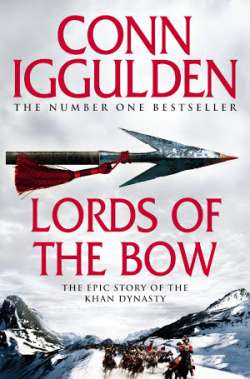
The gathering of the tribes of the Mongols has been a long time in coming but finally, triumphantly, Temujin of the Wolves, Genghis Khan, is given the full accolade of the overall leader and their oaths. Now he can begin to meld all the previously warring people into one army, one nation. But the task Genghis has set himself and them is formidable. He is determined to travel to the land of the long-time enemy, the Chin and attack them there. The distances and terrain-the wide deserts, the impenetrable mountains-make it a difficult venture even for the legendary Mongolian speed of movement, but the greatest problem is that of the complex fortifications, a way of fighting wars of a settled urban population which the nomadic Mongolians had never come across. Finding ways to tackle that and keeping his tribes together in a strange environment presents another new and exciting challenge for Genghis Khan.Not only must Genghis succeed in this incredible campaign, but he must also reconcile the restless factions among his own generals, mediate between his ambitious brothers and cope with his own reactions to his growing sons. The young warrior has become a notable and victorious military commander of thousands: he must now learn to become a great leader of peoples of many different races and religions.LORDS OF THE BOW is a deeply satisfying novel. It is epic in scope, convincing, and fascinating in the narration of an extraordinary story. Above all Genghis Khan continues to dominate the scene as he matures from the young boy of Wolf of the Plains to the great Conqueror.
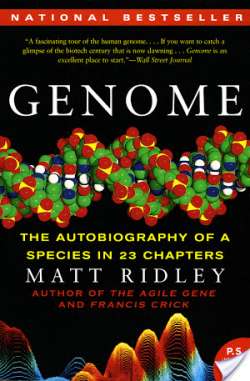
The genome's been mapped. But what does it mean? Arguably the most significant scientific discovery of the new century, the mapping of the twenty-three pairs of chromosomes that make up the human genome raises almost as many questions as it answers. Questions that will profoundly impact the way we think about disease, about longevity, and about free will. Questions that will affect the rest of your life. Genome offers extraordinary insight into the ramifications of this incredible breakthrough. By picking one newly discovered gene from each pair of chromosomes and telling its story, Matt Ridley recounts the history of our species and its ancestors from the dawn of life to the brink of future medicine. From Huntington's disease to cancer, from the applications of gene therapy to the horrors of eugenics, Matt Ridley probes the scientific, philosophical, and moral issues arising as a result of the mapping of the genome. It will help you understand what this scientific milestone means for you, for your children, and for humankind.
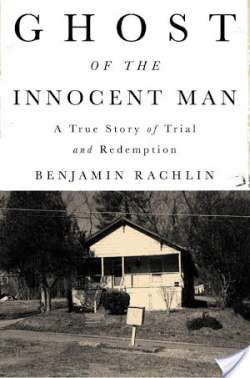
One of the Best Books of 2017: National Public Radio, San Francisco Chronicle, Library Journal, Shelf Awareness "Remarkable . . . Captivating . . . Rachlin is a skilled storyteller." --New York Times Book Review "A gripping legal-thriller mystery . . . Profoundly elevates good-cause advocacy to greater heights--to where innocent lives are saved." --USA Today "A crisply written page turner." --NPR A gripping account of one man's long road to freedom that will forever change how we understand our criminal justice system During the last three decades, more than two thousand American citizens have been wrongfully convicted. Ghost of the Innocent Man brings us one of the most dramatic of those cases and provides the clearest picture yet of the national scourge of wrongful conviction and of the opportunity for meaningful reform. When the final gavel clapped in a rural southern courtroom in the summer of 1988, Willie J. Grimes, a gentle spirit with no record of violence, was shocked and devastated to be convicted of first-degree rape and sentenced to life imprisonment. Here is the story of this everyman and his extraordinary quarter-century-long journey to freedom, told in breathtaking and sympathetic detail, from the botched evidence and suspect testimony that led to his incarceration to the tireless efforts to prove his innocence and the identity of the true perpetrator. These were spearheaded by his relentless champion, Christine Mumma, a cofounder of North Carolina's Innocence Inquiry Commission. That commission--unprecedented at its inception in 2006--remains a model organization unlike any other in the country, and one now responsible for a growing number of exonerations. With meticulous, prismatic research and pulse-quickening prose, Benjamin Rachlin presents one man's tragedy and triumph. The jarring and unsettling truth is that the story of Willie J. Grimes, for all its outrage, dignity, and grace, is not a unique travesty. But through the harrowing and suspenseful account of one life, told from the inside, we experience the full horror of wrongful conviction on a national scale. Ghost of the Innocent Man is both rare and essential, a masterwork of empathy. The book offers a profound reckoning not only with the shortcomings of our criminal justice system but also with its possibilities for redemption.
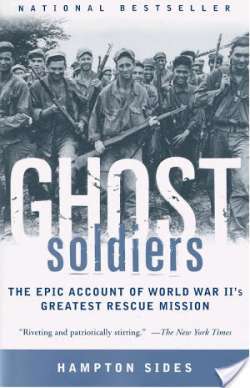
“The greatest World War II story never told” (Esquire)—the perfect gift for history buffs. On January 28, 1945, 121 hand-selected U.S. troops slipped behind enemy lines in the Philippines. Their mission: March thirty rugged miles to rescue 513 POWs languishing in a hellish camp, among them the last survivors of the infamous Bataan Death March. A recent prison massacre by Japanese soldiers elsewhere in the Philippines made the stakes impossibly high and left little time to plan the complex operation. In Ghost Soldiers Hampton Sides vividly re-creates this daring raid, offering a minute-by-minute narration that unfolds alongside intimate portraits of the prisoners and their lives in the camp. Sides shows how the POWs banded together to survive, defying the Japanese authorities even as they endured starvation, tropical diseases, and torture. Harrowing, poignant, and inspiring, Ghost Soldiers is the mesmerizing story of a remarkable mission. It is also a testament to the human spirit, an account of enormous bravery and self-sacrifice amid the most trying conditions.
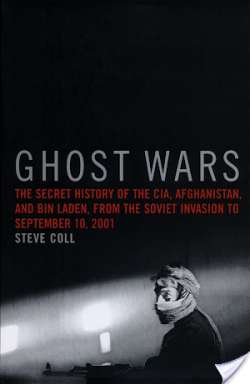
Provides a comprehensive overview of the CIA's and other covert agencies' operations in Afghanistan, from the Soviet invasion in 1979 through the summer of 2001, detailing the rise of the Taliban and bin Laden, the secret efforts of the CIA to capture or kill bin Laden since 1998, and their failure to stop bin Laden, al Qaeda, and the events of September 11th.
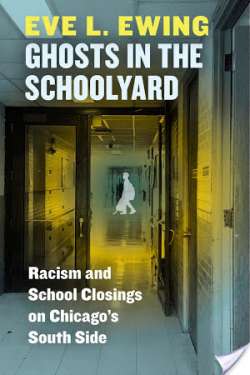
"Failing schools. Underprivileged schools. Just plain bad schools." That's how Eve L. Ewing opens Ghosts in the Schoolyard: describing Chicago Public Schools from the outside. The way politicians and pundits and parents of kids who attend other schools talk about them, with a mix of pity and contempt. But Ewing knows Chicago Public Schools from the inside: as a student, then a teacher, and now a scholar who studies them. And that perspective has shown her that public schools are not buildings full of failures--they're an integral part of their neighborhoods, at the heart of their communities, storehouses of history and memory that bring people together. Never was that role more apparent than in 2013 when Mayor Rahm Emanuel announced an unprecedented wave of school closings. Pitched simultaneously as a solution to a budget problem, a response to declining enrollments, and a chance to purge bad schools that were dragging down the whole system, the plan was met with a roar of protest from parents, students, and teachers. But if these schools were so bad, why did people care so much about keeping them open, to the point that some would even go on a hunger strike? Ewing's answer begins with a story of systemic racism, inequality, bad faith, and distrust that stretches deep into Chicago history. Rooting her exploration in the historic African American neighborhood of Bronzeville, Ewing reveals that this issue is about much more than just schools. Black communities see the closing of their schools--schools that are certainly less than perfect but that are theirs--as one more in a long line of racist policies. The fight to keep them open is yet another front in the ongoing struggle of black people in America to build successful lives and achieve true self-determination.

Named one of the best books of 2017 by The Guardian, NPR, GQ, The Economist, Bookforum, Amazon, and Lit Hub The definitive account of what happened, why, and above all how it felt, when catastrophe hit Japan—by the Japan correspondent of The Times (London) and author of People Who Eat Darkness On March 11, 2011, a powerful earthquake sent a 120-foot-high tsunami smashing into the coast of northeast Japan. By the time the sea retreated, more than eighteen thousand people had been crushed, burned to death, or drowned. It was Japan’s greatest single loss of life since the atomic bombing of Nagasaki. It set off a national crisis and the meltdown of a nuclear power plant. And even after the immediate emergency had abated, the trauma of the disaster continued to express itself in bizarre and mysterious ways. Richard Lloyd Parry, an award-winning foreign correspondent, lived through the earthquake in Tokyo and spent six years reporting from the disaster zone. There he encountered stories of ghosts and hauntings, and met a priest who exorcised the spirits of the dead. And he found himself drawn back again and again to a village that had suffered the greatest loss of all, a community tormented by unbearable mysteries of its own. What really happened to the local children as they waited in the schoolyard in the moments before the tsunami? Why did their teachers not evacuate them to safety? And why was the unbearable truth being so stubbornly covered up? Ghosts of the Tsunami is a soon-to-be classic intimate account of an epic tragedy, told through the accounts of those who lived through it. It tells the story of how a nation faced a catastrophe, and the struggle to find consolation in the ruins.
